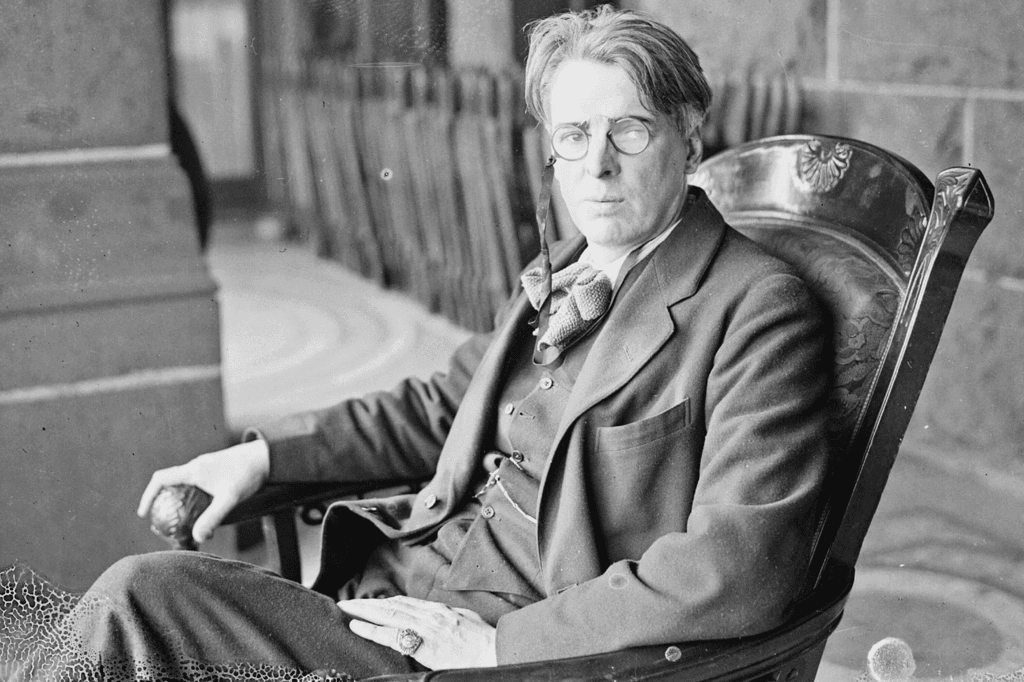For Anne Gregory Summary Class 10 English First Flight Chapter 10
| Table of contents |

|
| About the Poet |

|
| Key Points of the Poem |

|
| Detailed Summary |

|
| Theme/Message |

|
| Difficult Words |

|
About the Poet
- William Butler Yeats, born in 1865, was an Irish poet and one of the foremost figures of 20th-century literature.
 William Butler Yeats
William Butler Yeats - He was a driving force behind the Irish Literary Revival and co-founded the Abbey Theatre.
- Yeats received the Nobel Prize in Literature in 1923 for his profound poetic works that embody the spirit of a whole nation.
Key Points of the Poem
- The poem "For Anne Gregory" is a conversation between a young man and a young woman.
- The argument revolves around the idea of true love: whether one can be loved solely for their inner self or if external attributes like hair color play a significant role.
- The poem consists of three stanzas.
Detailed Summary
Stanza 1
“Never shall a young man,
Thrown into despair
By those great honey-coloured
Ramparts at your ear,
Love you for yourself alone
And not your yellow hair.”
In this stanza, the speaker, a young man, is emphatically stating that no young man, upon being captivated by the enchanting beauty of the young woman's golden hair, will ever truly love her for who she is as a person. He argues that her hair, being like golden ramparts around her face, will always be the primary focus of admiration and desire for any man who sees her. The speaker seems to suggest that her external beauty, particularly her yellow hair, will overshadow any other qualities she possesses. This stanza reflects a conflict between superficial attraction and genuine love, highlighting the theme of superficiality versus true affection.
Stanza 2
“But I can get a hair-dye
And set such colour there,
Brown, or black, or carrot,
That young men in despair
May love me for myself alone
And not my yellow hair.”
In the second stanza, the young woman responds to the young man's argument by stating that she has the ability to change the color of her hair through the use of hair dye. She suggests that by altering the color of her hair to brown, black, or carrot (red), she can potentially shift the focus of young men's admiration from her external appearance to her inner self. The young woman expresses a desire for genuine love based on who she is as a person rather than on her physical attributes. This stanza introduces the theme of individual agency and the idea of altering external perceptions to seek authentic connections.
Stanza 3
“I heard an old religious man
But yesternight declare
That he had found a text to prove
That only God, my dear,
Could love you for yourself alone
And not your yellow hair.”
In the third stanza, the young woman recounts hearing an old religious man claim that he had discovered a religious text supporting the notion that only God, and not humans, is capable of loving someone purely for who they are, independent of their external appearance. The religious man's assertion implies a divine and unconditional form of love that transcends physical attributes like yellow hair. This stanza delves into the idea of spiritual love and the concept of being valued for one's essence beyond superficial characteristics.
Theme/Message

Message:
- True love should be based on inner qualities rather than external appearances.
- Identity should not be defined solely by physical attributes such as hair color.
- The poem questions conventional notions of love and challenges societal expectations.
Difficult Words
- Ramparts: Protective barrier or fortification.
- Despair: A state of hopelessness or loss of hope.
- Text: A religious or moral principle.
- Conventional: Following traditional standards or customs.
- Perspectives: Different ways of viewing or understanding a situation.
- Profound: Showing great insight or knowledge.
- Revival: Restoration to life, consciousness, or strength.
- Embodiment: A tangible or visible form of an idea, quality, or feeling.
- Challenges: Difficult tasks or situations that test one's abilities.
- Notions: Ideas, beliefs, or concepts.
- Societal: Relating to society or social relations.
- Attributes: Inherent characteristics or qualities.
- Conventional: Following traditional standards or customs.
- Expectations: Beliefs about how things will be or should be.
FAQs on For Anne Gregory Summary Class 10 English First Flight Chapter 10
| 1. What is the central theme of the poem "For Anne Gregory"? |  |
| 2. Who is the speaker in the poem "For Anne Gregory"? |  |
| 3. How does the speaker describe Anne Gregory's physical appearance in the poem? |  |
| 4. What does the speaker suggest Anne Gregory should change about herself in the poem? |  |
| 5. What is the significance of the title "For Anne Gregory" in the context of the poem? |  |















